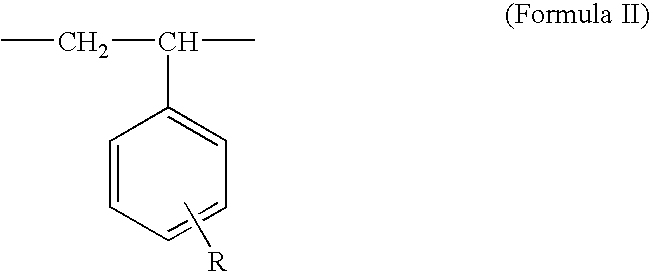High voltage electrolytes
a high-voltage electrolyte, non-aqueous electrolyte technology, applied in the direction of electrolytic capacitors, electrolytic capacitors, electrolytic generators, etc., can solve the problems of internal pressure buildup of edlcs which utilize non-aqueous electrolytes, edlc seal leakage or rupture, etc., to reduce the pressure inside an edlc and high operating voltage
- Summary
- Abstract
- Description
- Claims
- Application Information
AI Technical Summary
Benefits of technology
Problems solved by technology
Method used
Image
Examples
example 1
[0036]Example 1 was prepared in a manner identical to Comparative Example 1 with the exception of stirring the electrolyte for 24 hours with 10 wt % of activated aluminum oxide powder after the drying. The activated aluminum oxide has basic surface groups and will react with free acid to form an insoluble solid in the electrolyte and removing the acid or acidic compounds. The precipitate can be removed by filtration. After this treatment, free acid was not detectable. In the pressure test the EDLC containing this electrolyte, the EDLC showed a much lower pressure increase rate of about 15 mbar / h. The leakage current after 24 hours was less than about 0.02 A. A summary of the results of this example is provided in Table 1.
examples 2-6
[0037]The procedure of Example 1 was repeated, except that the activated aluminum oxide was replaced with the acid scavenger indicated in Table 1. A summary of the results of these examples is provided in Table 1.
TABLE 1TestPressureEst. pressureLeakageExampleTreatment withFree acidconditionsincrease rateafter 2000 hcurrentComparative(none)35 ppm 3.0 V, 65° C.17.5 mbar / h34 barExample 1Example 1Activated aluminum0 ppm3.0 V, 65° C. 15 mbar / h30 baroxide, basic, powderExample 2soda-lime glass21 ppm 3.0 V, 65° C.16.5 mbar / h33 barpowderExample 3Aluminosilicate4 ppm3.0 V, 65° C.12.5 mbar / h25 barpowderExample 4Sodium aluminosilicate,0 ppm3.0 V, 65° C.13.8 mbar / h27.6 bar molecularsieve 4A-NA pelletsExample 5Potassium aluminosilicate,0 ppm3.0 V, 65° C.13.5 mbar / h27 barmolecularsieve UOP XH-6pelletsExample 6Free base anion0 ppm3.0 V, 65° C.13.5 mbar / h29 barexchangers pellets,Dowex M43
[0038]These examples show that various reactive materials can be used as solid acid polisher during electrolyt...
example 7
[0045]An electrolyte was prepared in a manner identical to Comparative Example 1 with the exception of adding 4000 ppm of triethylamine, a nitrogen-base permanent acid scavenger. After this treatment, free acid was not detectable. The amount of free base was determined by diluting 10 ml electrolyte with 10 ml of high purity water, adding a known amount of hydrochloric acid and titrating the excess back with 0.01 mol / l potassium hydroxide solution until a pH of 7 was reached. The conductivity of this electrolyte solution was about 55 mS / cm at 25° C. In the pressure test the EDLC containing this electrolyte, the EDLC showed a low pressure increase rate of about 12 mbar / h. The leakage current was less than about 0.02 A. A summary of the results of this example is provided in Table 2.
PUM
| Property | Measurement | Unit |
|---|---|---|
| Temperature | aaaaa | aaaaa |
| Fraction | aaaaa | aaaaa |
| Fraction | aaaaa | aaaaa |
Abstract
Description
Claims
Application Information
 Login to View More
Login to View More - R&D
- Intellectual Property
- Life Sciences
- Materials
- Tech Scout
- Unparalleled Data Quality
- Higher Quality Content
- 60% Fewer Hallucinations
Browse by: Latest US Patents, China's latest patents, Technical Efficacy Thesaurus, Application Domain, Technology Topic, Popular Technical Reports.
© 2025 PatSnap. All rights reserved.Legal|Privacy policy|Modern Slavery Act Transparency Statement|Sitemap|About US| Contact US: help@patsnap.com



